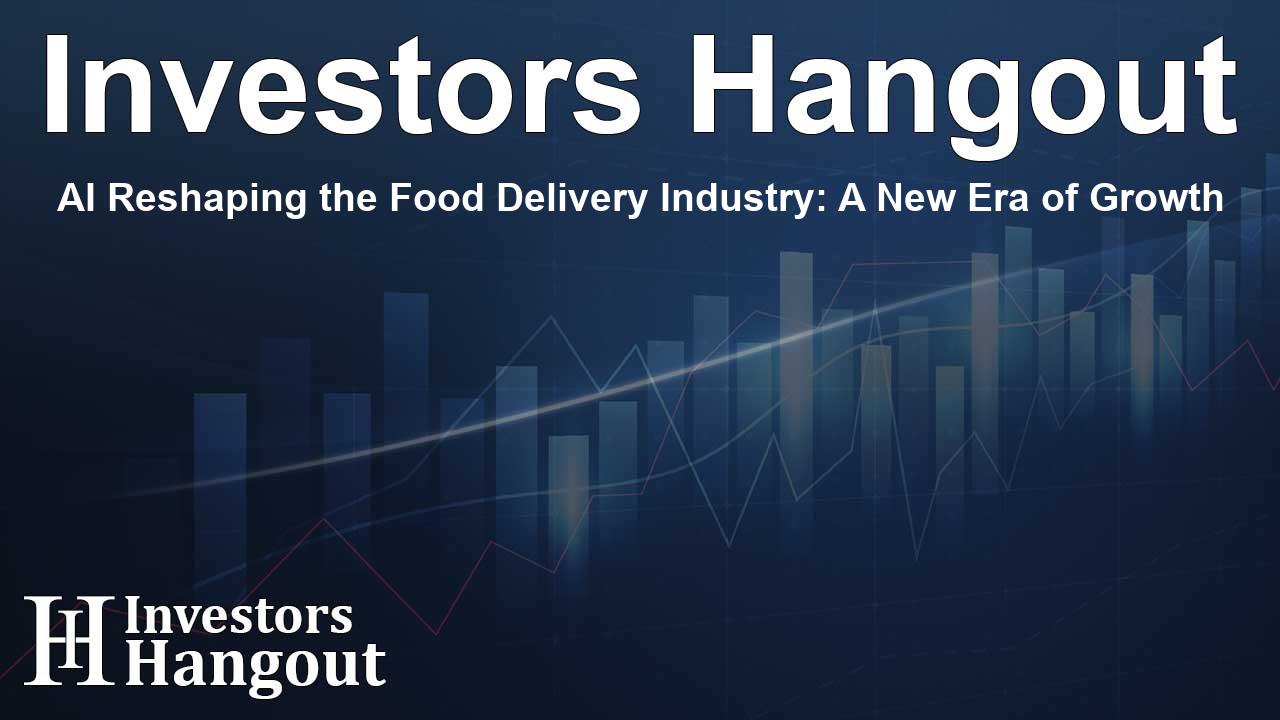AI Reshaping the Food Delivery Industry: A New Era of Growth

AI Reshaping the Food Delivery Industry
The online on-demand food delivery market is entering an exciting new phase, with projections of significant growth. Recent studies estimate that this market could expand by a staggering USD 559.2 billion by the time we reach the end of the forecast period in 2028. This growth, according to experts, is being powered in large part by the integration of artificial intelligence (AI) and the deepening partnerships between restaurants and delivery aggregators.
Market Growth Drivers
Several factors are contributing to this market's trajectory. One key driver is the marked increase in collaboration between restaurants and food delivery services. As technological advancements continue to transform the landscape, more eateries are opting to partner with online platforms to reach a broader customer base. This trend is not only beneficial for restaurants in terms of increased visibility and customer access but also enhances the customer experience by simplifying the ordering process.
Emphasis on Technology
An increasing emphasis on technology is reshaping how food is delivered. Enhanced functionality in logistics and mobile applications allows for smoother transactions. Noteworthy advancements include IoT (Internet of Things) devices facilitating cross-platform ordering. For instance, services like Domino's Anyware are paving the way for easy ordering through devices such as smart TVs, smartwatches, and smartphones. These innovations are set to reshape the consumer's culinary experience significantly over the forecast period.
Market Challenges
Despite the optimistic outlook, there are hurdles to overcome. One significant challenge is the growing direct competition from restaurants that are choosing to manage their deliveries independently. This shift enables them to maintain control over branding and customer interaction but can threaten the overall growth of the online delivery segment. As restaurants increase their delivery capabilities, they introduce a more streamlined process, to directly connect to consumers and potentially reduce delivery wait times.
Consumer Preferences and Trends
Consumer preferences are evolving as well, with heightened demand for healthier, sustainable, and diverse meal options. The market is witnessing a surge in the popularity of plant-based and organic foods, which cater to modern dietary preferences. These emerging consumer trends are prompting food delivery services to adapt and expand their offerings to meet the changing landscape.
Regional Insights
Growth in the online food delivery market isn't homogeneous; rather, it varies by region. Asia-Pacific, for instance, is experiencing substantial growth, contributing to 71% of the market share. This region’s dynamic population and technology adoption are powerful influencers on market behavior. As urbanization continues, cities thrive with consumers poised for convenience, thus driving demand for meal delivery services.
Global Competition Landscape
In this competitive arena, several key players are making their mark. Companies such as Uber Technologies Inc., Delivery Hero SE, and Grubhub Inc. are securing their positions by innovating and expanding their service capabilities. Each key company possesses unique strategies to attract consumers, such as loyalty programs, promotional offers, and tech-enhanced delivery logistics.
Evolution of the Industry
The historical trajectory of the food delivery market speaks volumes about its adaptability and resilience. Advancements have shifted from simple phone orders to complex digital transactions coupled with real-time tracking capabilities. This evolution is crucial as consumer demands for efficiency continue to rise.
Future Projections
Looking ahead, the future of the on-demand food delivery market appears robust, driven by innovation and adaptability at every corner. The integration of AI and data analytics promises to create smoother operating models, enhancing the customer journey from the moment of order to delivery.
Frequently Asked Questions
What is driving the growth of the on-demand food delivery market?
The growth is driven largely by increased partnership between restaurants and delivery aggregators, as well as the integration of advanced technologies such as AI and IoT.
How much is the food delivery market expected to grow by 2028?
Experts project that the market will grow by USD 559.2 billion by 2028.
What are the main challenges currently facing the industry?
A primary challenge is the increasing number of restaurants handling their own delivery services, potentially impacting overall market growth.
Which regions are seeing significant growth in online food delivery?
Asia-Pacific is experiencing notable growth, currently making up 71% of the market share.
What trends are shaping consumer preferences in food delivery?
There is a growing emphasis on healthier and more sustainable food options, including plant-based and organic dishes.
About Investors Hangout
Investors Hangout is a leading online stock forum for financial discussion and learning, offering a wide range of free tools and resources. It draws in traders of all levels, who exchange market knowledge, investigate trading tactics, and keep an eye on industry developments in real time. Featuring financial articles, stock message boards, quotes, charts, company profiles, and live news updates. Through cooperative learning and a wealth of informational resources, it helps users from novices creating their first portfolios to experts honing their techniques. Join Investors Hangout today: https://investorshangout.com/
Disclaimer: The content of this article is solely for general informational purposes only; it does not represent legal, financial, or investment advice. Investors Hangout does not offer financial advice; the author is not a licensed financial advisor. Consult a qualified advisor before making any financial or investment decisions based on this article. The author's interpretation of publicly available data shapes the opinions presented here; as a result, they should not be taken as advice to purchase, sell, or hold any securities mentioned or any other investments. The author does not guarantee the accuracy, completeness, or timeliness of any material, providing it "as is." Information and market conditions may change; past performance is not indicative of future outcomes. If any of the material offered here is inaccurate, please contact us for corrections.